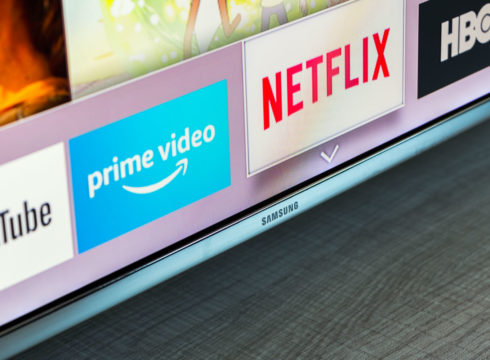Each signatory platform will have to set up a framework for age classification and description for each title and access controls
The code will ensure that users have more choice and control over the content they prefer to watch
Each signatory to the code has agreed to appoint an external advisor as part of the grievance redressal mechanism by November
Inc42 Daily Brief
Stay Ahead With Daily News & Analysis on India’s Tech & Startup Economy
As many as 15 Indian streaming services and digital content companies including Amazon Prime Video, Netflix, Disney Hotstar, Zee5, Viacom 18, MX Player, Jio Cinema, Eros Now, ALTBalaji, Arre, HoiChoi, Hungama, Shemaroo, Discovery Plus and Flickstree on Friday (September 4) have agreed to adopt Universal Self-Regulation Code for Online Curated Content Providers (OCCPs) in India.
As part of the code, each signatory platform will have to set up a framework for age classification and description for each title and access controls. This move will give the users more choice and control over the content they prefer to watch.
OTT platforms will also have to set-up a Consumer Complaints Department or an internal committee, as well as an advisory panel, which will deal with complaints, appeals and escalations.
According to Medianama, the panel will have three members, two of whom will be executives of the streaming service, and one an “independent external advisor” who must not be employed by the company in any other capacity.
The code has been effective since August 15, 2020, will allot OTT platforms to comply with all guidelines in a time-bound manner. Each signatory to the code has agreed to appoint an external advisor as part of the grievance redressal mechanism within 60 days from September 4.
“With the framework for age classification, content descriptions and parental controls in combination with a grievance redressal system, we have made it easier for consumers to make the right viewing decisions for themselves and their families. Most of the major streaming services have adopted the code and we look forward to others joining,” said Tarun Katial, Chair, Digital Entertainment Committee, The Internet and Mobile Association of India (IAMAI).
Breather For OTTs
The decision comes as a relief for OTT players who have been under the government’s scanner over censorship. However, last year after consultations the government had agreed on letting OTT platforms come together and implement a self-regulation model. , which will not require any intervention from the government’s side.
OTT platforms have seen increased traction in the backdrop of the pandemic. There are currently 35+ video OTT players in India, catering to a subscriber-based user base of 53.1 Mn (as of November 2019). In 2019 only, 11+ local and international players have marked their entry in this space. This indicates an untapped opportunity in the Indian online video content sector.
Since then, this number has only risen further. The overall OTT market in India is expected to grow at 21.8% CAGR from INR 4,464 Cr in 2018 to INR 11,976 Cr in 2023, according to PwC’s Global Entertainment & Media Outlook 2019–2023. A September 2019 report by KPMG predicts that India will have more than 500 Mn online video subscribers by FY2023. This would make it the second-largest market after China.
Note: We at Inc42 take our ethics very seriously. More information about it can be found here.


